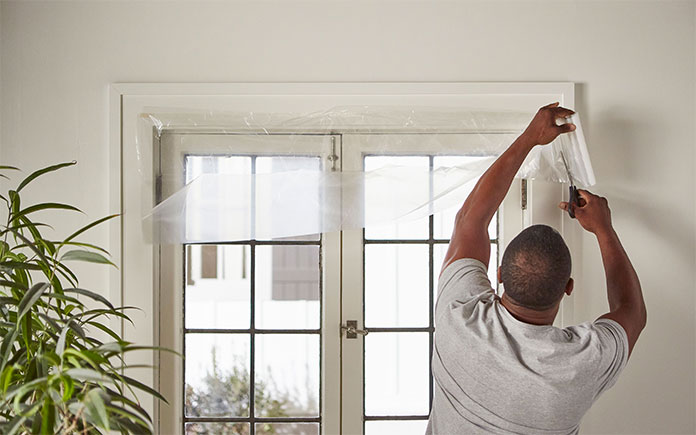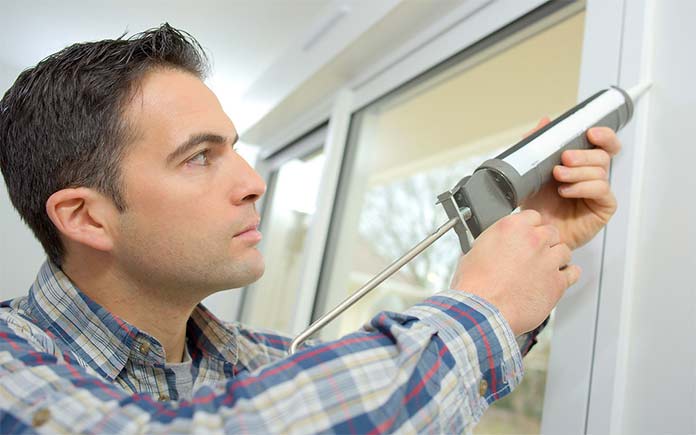
It’s been said that life has two certainties: death and taxes. But there’s actually a third thing: thermal expansion.
Homeowners should understand this event, how it affects your home’s energy efficiency, and — above all — what to do about it.

About Thermal Expansion
As a solid, liquid or gas’ temperature increases, so does its volume. That, in a nutshell, is the definition of thermal expansion.
But you don’t need to study thermodynamics to understand the basics. It’s simple: If your doors or windows get stuck, it’s because they got hot.
The reverse happens, too: as a solid, liquid or gas’ temperature decreases, so does its volume.
Such temperature swings and structural shifts often stress homes, leaving cracks and gaps.
Air, water and debris can then creep indoors, lowering the home’s energy efficiency, raising your energy bills, and diminishing your comfort.

The Importance of Home Weatherization
Heating and cooling systems keep you comfortable, but thermal expansion undermines even the best climate control.
Winter air that invades your home forces the heater to work harder — giving ‘forced air furnace’ a whole new meaning! And summer air that sneaks inside strains your air conditioner.
Frequent stress on the heating and cooling system leads to equipment failure, more service calls, and shorter life expectancy for the unit.
No home has maximum energy efficiency — not even new ones — because cracks and gaps are inevitable as the seasons change. So, it’s up to the homeowner to do something about it.
That’s why weatherization — sealing your home with aftermarket products to protect it from extreme weather changes — is so important.

Weatherizing Your Home: A Checklist
Home weatherization is an easy, affordable do-it-yourself project. And it’s your best defense against thermal expansion and contraction.
Best of all, the results can boost your home’s energy efficiency, slash utility bills, and increase your family’s comfort.
Not sure where to begin? Follow along!

1. Block Drafts Under Doors
While inside, look under your entry doors — if the sun shines through, they need bottom seals.
Duck® Brand’s Double Draft Seal is a foam insert that you cut to size and secure in place with patented straps. It’s removable, renter-friendly, and works for interior and exterior doors.
The seal won’t slide off or stick to doors, and it won’t damage them. It works with most flooring types, and the fabric cover is machine washable — so you can block drafts in style.

2. Insulate Your Windows
During cold winter months, you may feel gusts through a window frame’s gaps. You can install a temporary barrier between the window and your home’s living space to block these drafts.
Duck® Brand’s Rolled Window Kits are easy to apply and have everything you need. To prepare the surface, clean the window frame to remove excess dust. Then, apply double-sided tape to the window’s outside edge and remove the tape liner.
Next, roll the film horizontally, from the window’s top-left edge, and cut it to size; roll the film vertically to the window’s bottom edge, and press it firmly onto the tape.
Finally, shrink the film with a hairdryer to remove wrinkles, and cut any excess film with scissors.

3. Apply Weatherstripping
Small cracks and gaps around windows and doors lead to year-round energy losses. You can’t stop thermal expansion, but you can apply weatherstripping to prevent its inevitable impact on your home.
Duck® Brand Weatherstrip Seals are made of self-adhesive foam for an easy install. Just remove dirt and dust from the project area, measure the space, cut the product to size, remove the protective backing, and press the seal into place.
For added assurance, especially in colder climates, consider Duck® Brand Heavy-Duty Weatherstrip Seals. They’re guaranteed to not crack in temperatures as low as -40 degrees Fahrenheit.
Remember: Weatherstripping works year-round, not just to prevent drafts, but also to block dust, pollen and insects from invading your home.

Next Steps
Congratulations! You’ve taken the first — and best — steps toward protecting your home from thermal expansion’s inevitable results, and boosting energy efficiency.
It’s also a good idea to add more attic insulation, replace your air filter, caulk exterior cracks, and get a professional heating and cooling system inspection. Read ‘5 Reasons Your House is Cold’ to learn more about that!
And check out Weather.DuckBrand.com for more home weatherization products.










